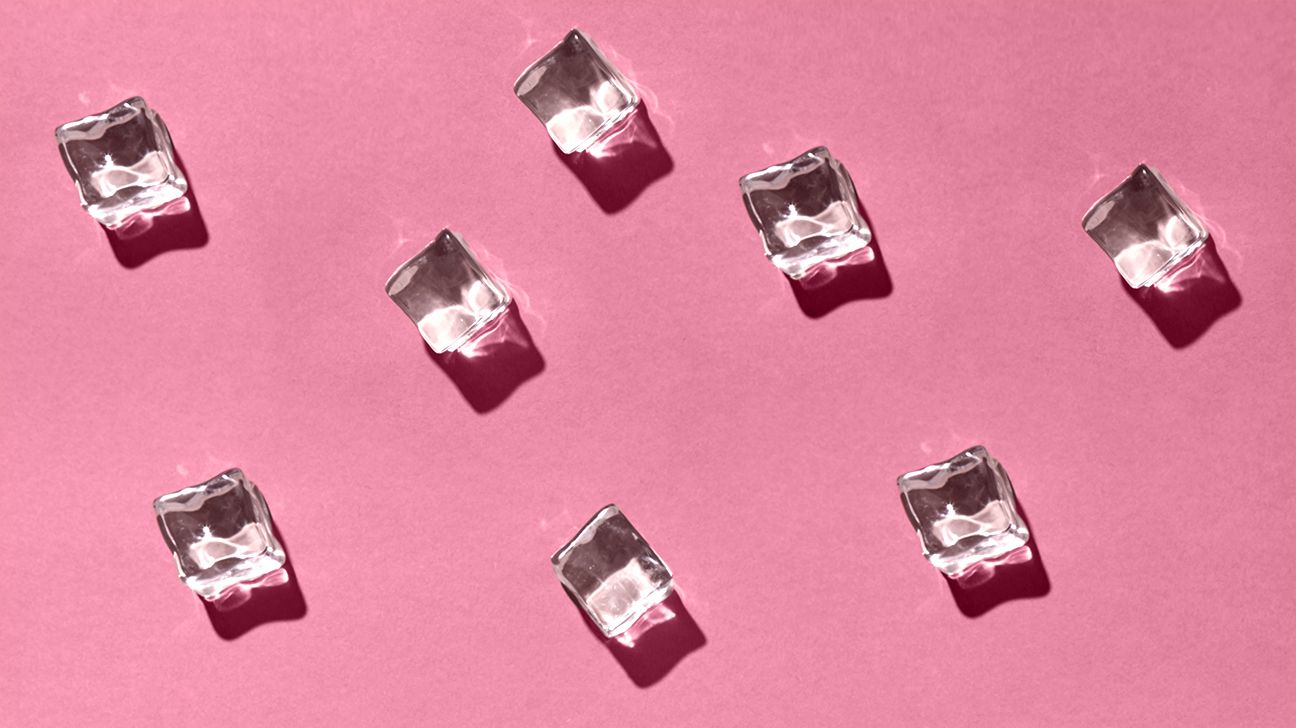Almost everyone’s had at least one pimple that’s given Mt. Everest a run for its money. When the redness and pain start radiating like a volcano ready to explode, relief could be as close as your kitchen.
Have you ever heard of using ice for acne? Much easier to use (and less expensive) than rollers, brushes, and face masks, ice on a pimple can reduce redness and swelling so your acne is less painful and less noticeable.

At first, ice on your face sounds like fake news. But the nature of pimples and the laws of nature (cold makes things shrink) replace the fake with fact.
Pimples form when hair follicles get clogged with sebum (your skin’s natural oils) and skin cells. Sometimes bacteria gets in there too. After that, the hair follicle can swell, get inflamed, and sometimes burst.
Once the pimple ruptures, it really is like a volcano. The pimple juice flows like lava, spreading all the juicy infection and irritation.
But not all pimples swell and erupt like Mount St. Helens. Some, called comedones — which include blackheads, whiteheads, and similar unwanted face bumps — are noninflammatory and don’t have the typical oozing pus or bacteria.
Since there’s no inflammation, they don’t hurt. They look like raised bumps with a black or white center. Ice works on the pimples that get red and swollen but not on this noninflammatory type of acne.
Ice reduces swelling by lowering the tissue’s temperature, causing the blood vessels to shrink. The temperature change is like dousing that fiery red pimple with water. It reduces the swelling and numbs some of the associated pain.
Will it get rid of acne altogether? No. But it can certainly make it look and feel better for a while.
You might think it would be as easy as “ice cube on pimple” and done. But there’s a little more to an ice treatment for acne than that.
Here’s why: It doesn’t take long for ice to cause frostbite. You might need to take different precautions depending on where the pimple shows up. Those nasty critters can pop up just about anywhere, including places we’d all rather not mention.
Do a little prep and make sure you get the maximum benefit from the ice by following these steps:
- Gently wash the area with a mild cleanser and warm water.
- Dry the skin.
- Wrap the ice in a paper towel, a washcloth, or another piece of fabric. DO NOT apply ice directly to your skin. Freezer burn on your face is no bueno.
- Hold the ice on the affected area for 30 to 60 seconds.
- You can repeat this every few minutes, but stop the on/off cycle after 15 minutes to prevent frostbite.
Pimples on your face are the easiest to treat with ice. One piece of ice in a paper towel or washcloth gets it done. But a bigger breakout on your chest or back may call for a more aggressive approach. A plastic bag filled with ice, an ice pack, or even a bag of frozen peas can work on larger areas of painful acne.
Always, ALWAYS wrap the bag of ice, ice pack, or any other frozen thing you put on your face in some kind of protective cloth. If the pimple is in an area that’s difficult for you to reach, try lying on the bag to make application easier.
Remember when we said not all acne causes inflammation? Whiteheads, blackheads, and other comedones that don’t come with inflammation won’t respond to ice. It’ll do absolutely nothing for them.
If that’s the kind of acne you’ve got, facial scrubs and topical ointments are better options.
The only real side effect you need to worry about is frostbite. Avoid that by wrapping the ice in a towel or another piece of cloth. If the cloth is too thin, the ice may still come into close contact with your skin, so be careful. The ice should feel cool, but it shouldn’t burn.
You also want to keep the treatment intervals to 30 to 60 seconds. Any longer than that and you risk damaging your skin by leaving the cold on for too long.
It’s a good idea to be aware of the symptoms of frostbite and what it feels like. Stop icing immediately if you notice any of the following:
- tingling or numbness in the affected area
- a pale area of skin surrounded by red, swollen tissue
- blistered or peeling skin
- shedding of deep skin layers
Your skin may also react to the cold if you have a condition called cold urticaria, in which swelling, welts, and hives pop up after exposure to cold air or water. The rash is noticeable within 2 to 5 minutes of hitting the cold and typically disappears after a couple of hours.
An ice cube can temporarily reduce swelling and numb the throbbing pain of deep acne. But it can’t make the acne go away or prevent it from coming back. For that, you can use home acne remedies, over-the-counter topical ointments and creams, and face scrubs.
Talk to a dermatologist if regular use of over-the-counter acne treatments doesn’t clear your breakouts. You may need a more potent topical treatment or prescription medication to root out the bacteria, sebum, or hormone imbalances that cause acne.

